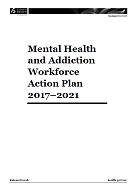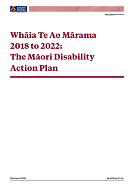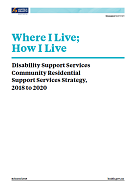Source: New Zealand Ministry of Health
The Director-General of Health, Dr Diana Sarfati, has supported, effective 23 August 2023, a time-limited pause on the use of surgical mesh for stress urinary incontinence.
The Surgical Mesh Roundtable (MRT), an oversight and monitoring group chaired by Manatū Hauora | Ministry of Health, has been investigating a pause since earlier this year, Dr Sarfati says.
Alongside this, Parliament’s Health Committee recommended in June that Manatū Hauora investigate a pause in the procedure after it considered the petition of Sally Walker, a woman who has been injured by mesh.
The MRT’s assessment is that the balance of benefit and harm from the procedure will be improved by the series of additional measures already planned, and it recommends a pause until those measures are substantively in place.
‘After considering the MRT’s assessment, I have decided to support a pause to allow the following steps to be put in place to reduce the harms linked to the procedure as much as possible,’ Dr Sarfati says.
Those steps are:
- providing tailored training and certification for surgeons performing the procedure;
- establishing a registry of all public and private patients who could benefit from it;
- reviewing patients and the decision to carry out the procedure at multi-disciplinary meetings, which include a range of experts from physiotherapists to surgeons; and
- using a structured and guided informed consent process for patients.
‘No surgery is without risks, and it’s important to remember that this particular procedure has changed the lives of many people for the better,’ Dr Sarfati says.
‘However, we recognise it has caused ongoing pain and lessened the quality of life for some people, and we therefore need to act to minimise these outcomes.
‘We also acknowledge the process has been slow at times and that has potentially added to the frustrations of those who have suffered harm from surgical mesh.’
Recognising the length of time to put these measures in place has been a significant factor behind our decision to put in place this time limited pause.
Dr Sarfati says, ‘It is important to note the procedure is paused, not banned.
‘That means there may be exceptions, and that the procedure might be carried out during the pause if a multi-disciplinary team agree there is no viable alternative. Any use would only happen after extensive consultation and review.
‘We acknowledge that this pause may cause additional uncertainty for patients awaiting treatment, and concern for those who have recently had it. However, we need to make sure that patients are given treatment that appropriately limits the risk of harm for as many people as possible, and we believe this move will help us achieve that.’
Background
Surgical mesh is a net-like fabric or tape that can be introduced as part of surgery to help repair weakened structures in the human body. As a net-like fabric it is used in the treatment of hernias and historically was also used in the treatment of pelvic organ prolapse (POP). As a tape it is used in the treatment of stress unrinary incontinence. These tapes are frequently known as TVTs (tension-free vaginal tapes) or MUS (mid-urethral slings). Mesh for treatment of POP has not been available for some years. This pause only affects mesh tapes used for stress urinary incontinence.
Urinary incontinence is the unintentional loss of urine. Stress incontinence happens when physical movement puts pressure on your bladder, causing you to leak urine.
The Ministry recognises that its advice has no legal weight, though it is supported by the Royal Australasian College of Surgeons and the Royal Australian and New Zealand College of Obstetricians and Gynaecologists and Medical Council of New Zealand. The recommendation to the sector would likely be considered in any review of complaints against health professionals by health regulatory agencies.
Alternative treatments for stress urinary incontinence can include surgery without the use of mesh, and non-surgical interventions.
The Surgical Mesh Roundtable, chaired by the Ministry of Health’s Chief Medical Officer Dr Joe Bourne, will retain oversight on the progress and will provide advice to Manatū Hauora, at the point, a pause can be lifted.
It is difficult to quantity the risks and benefits for these procedures. We know they are successful for many people, and that procedures using mesh have a good outcome for 75% of women, slightly higher than the 70% of good outcomes for women who undergo a non-mesh procedure.
The evidence around risk of harm is more complex. We know that the Health and Disability Commissioner has reported 64 complaints in the past ten years and there is also a 3.6% injury rate for procedures involving mesh based on ACC figures over the past 17 years.
While this incidence is broadly consistent with the international data it is not possible to accurately track how it has changed across those years.
If people have recently had surgery that involves the use of mesh, the decision would have carefully been considered and was likely to have been the most appropriate option. Most patients have had successful stress urinary incontinence mesh procedures without complications. If people are not experiencing complications, there is no need to take any action.
If a person becomes concerned that they have symptoms which could be related to mesh they should follow up with their medical practitioner. More information about pelvic mesh complications and the symptoms can be found on The New Zealand Female Pelvic Mesh Service. A referral to the NZ Female Pelvic Mesh Service run by Te Whatu Ora is an option to you if you are experiencing any problems that could be related to previous pelvic mesh surgery.


